A Day At The Races (Page Four)

A Day at the Races (1937) is the seventh film starring the three Marx Brothers, with Margaret Dumont, Allan Jones, and Maureen O'Sullivan. Like their previous MGM feature A Night at the Opera, this film was a major hit.
The plot thickens: Town villain Morgan has his sights set on taking over Judy's sanitarium and turning it into a casino. Aiding Judy in saving the sanitarium are Dr. Hugo Hackenbush, a horse doctor illegally employed as the sanitarium director; Tony, a helper at the sanitarium; and Stuffy, a jockey formerly employed by Morgan. Judy's boyfriend, Gil, a singer, has invested all his money in Hi Hat, a race horse he hopes will win enough to pay off the sanitarium debts. After Gil figures out the horse is a jumper and not a racer, the boys try to win a major steeplechase race, while Morgan and his men try to prevent the horse from getting onto the race track. Obligatory appearance by Margaret Dumont as the wealthy hypochondriac who might also save the santitarium from financial ruin.
Remember The Skit??
Back Over PCH and The Bridge

We head for the racetrack

Did you know? - The word jaywalk is a compound word derived from the word jay, an inexperienced person, and walk. No historical evidence supports an alternative folk etymology by which the word is traced to the letter "J" (characterizing the route a jaywalker might follow).
In towns in the American Midwest in the early 20th century, "jay" was a synonym for "rube", a pejorative term for a rural resident, assumed by many urbanites to be stupid, slightly unintelligent, or perhaps simply naïve. Such a person did not know to keep out of the way of other pedestrians and speeding automobiles. It may also have been coined from the existing American word Jayhawker, being a term for American guerillas in Missouri in the 19th century.
Originally, the legal rule was that "all persons have an equal right in the highway, and that in exercising the right each shall take due care not to injure other users of the way." In time, however, streets became the province of motorized traffic, both practically and legally. Automobile interests in the USA took up the cause of labeling and scorning jaywalkers in the 1910s and early 1920s; a counter-campaign to name (and disapprove of) "jay drivers" failed.
It has been suggested[by whom?] that the modern term 'joy-driving' or 'joy-riding' comes from the same route, and in some countries Jaywalkers are known as 'joy-walkers'[citation needed].

Catching the bus

Front row seats

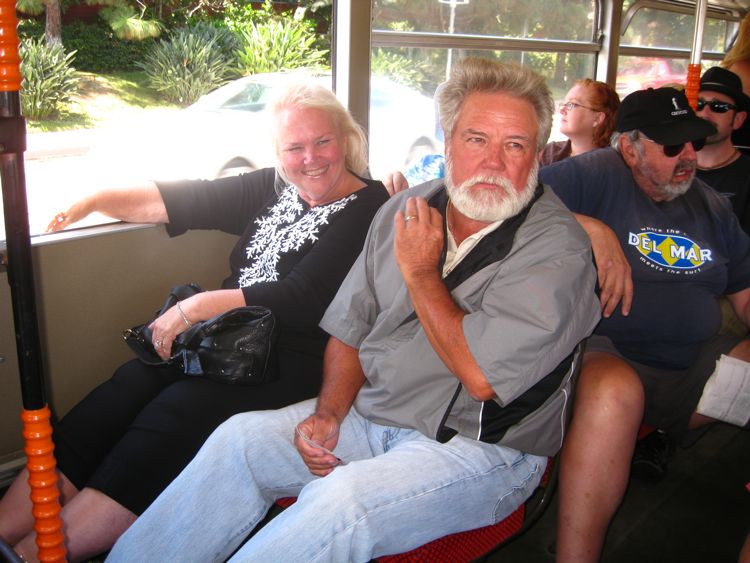
A short 1.1 miles

We are in Stretch Run Level Three

The Del Mar paddock
Did you know? - A paddock is a small enclosure or field of grassland, especially for horses. More specifically, the enclosed area at a race track where horses are paraded and mounted before a race, and unsaddled after a race

We are in
third level Section 13

We have reserved seating in the "Stretch Run" (Third Level, rows of stadium-style seats with views of the racecourse) area which are located before (west of) the finish line and are shaded!
It is easy access to betting and more importantly booze!!

Just in time for race #2

In the shade and out of the wind!

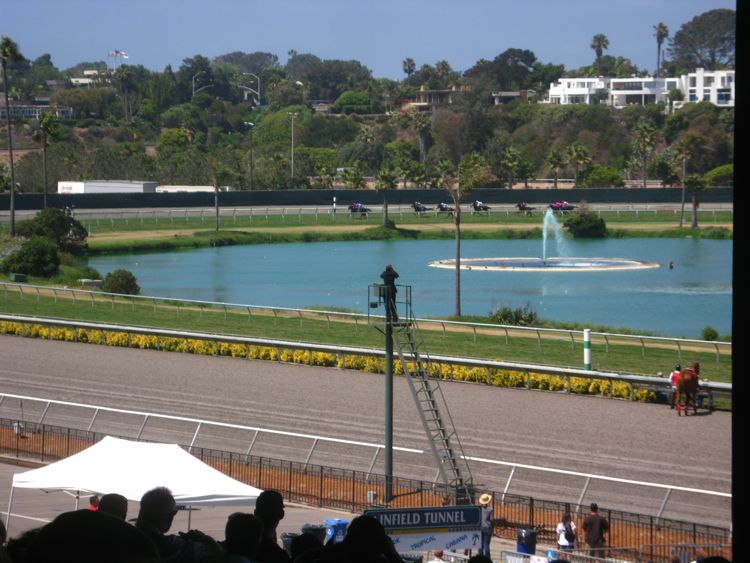
Here they come....

Go horsey go!





"Get it right this time buddy or your dead meat!"

"Yes Mam!"





Paul's favorite location at the track


They are off and running

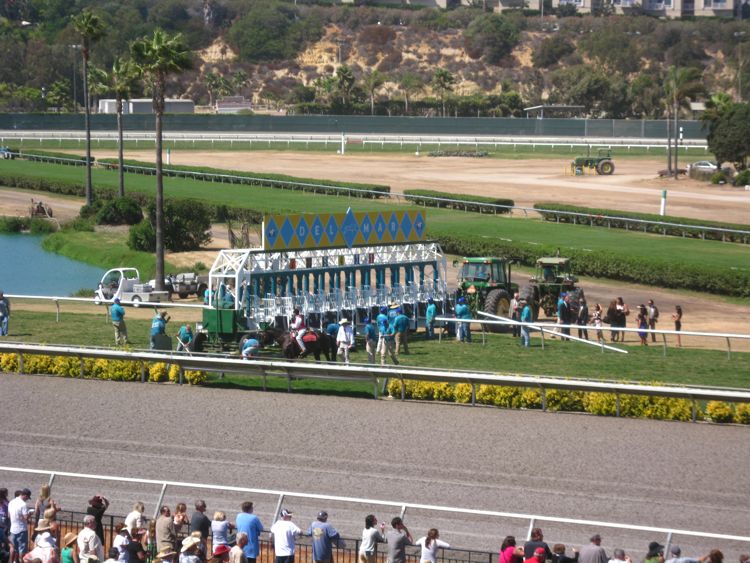
Quick... You have two minutes to move that thing
We Walked Down To Visit The Horsies Before The Run

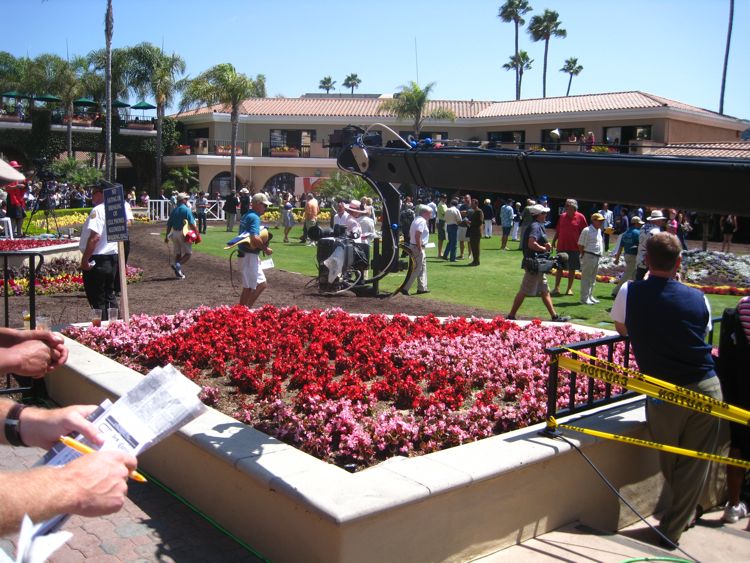
The paddock area was quite busy





Instant replays and other tracks


She checked our tickets and did not throw us out



"Big bully!!"
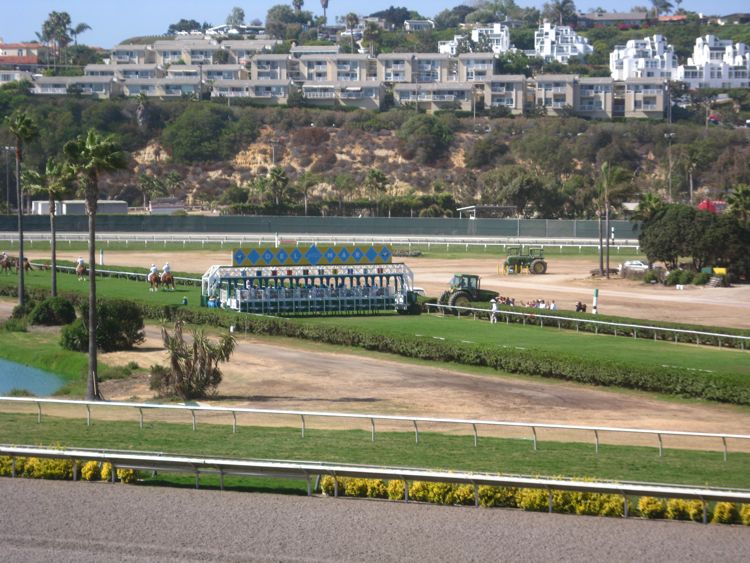
Getting into the starting gates
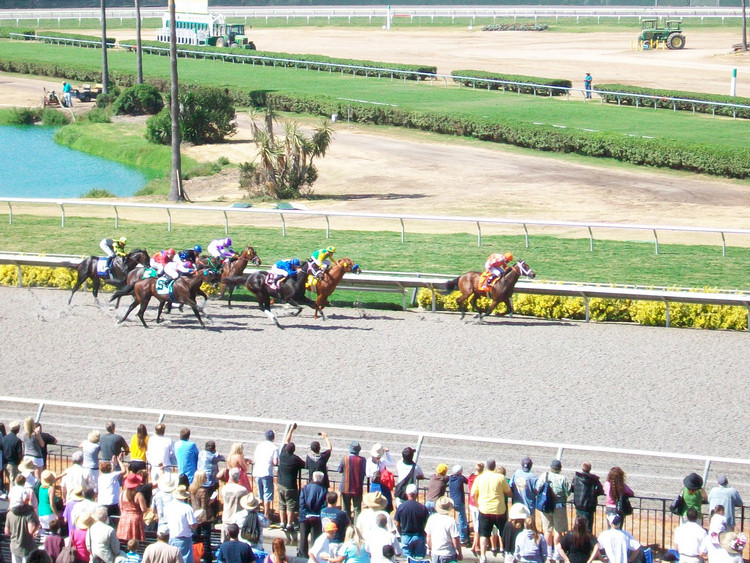
Did you know? - The inventor of the electric starting gate for horse racing is generally credited to be Clay Puett, who was a rider and starter at various tracks in the West. Puett's device replaced other starting methods used previously such as starting barriers, which were simple ropes or occasionally wooden barriers behind which the horses stood, or even simpler methods such as standing behind a chalk line to await a starter's flag. These previous methods often did little to produce a fair start, with extra judges employed to catch horses who got a jump on the rest of the field.
Many of Puett's actual gates are still in use today at tracks around the world, and all gates are based on his original design. A starting gate is equipped with a number of stalls aligned in a row, usually numbering 12 or 14 for everyday use at tracks.
Smaller gates may be used at training facilities for schooling horses, or as an auxiliary gate in addition to the main gate for large-field races such as the Kentucky Derby. Horses normally enter from the rear of the stall, with doors locked behind the horse once it is in place; the front doors of the stall are normally closed as the horse is loaded in, though the starting-gate crew may open it to entice a horse who balks at entry. Alternately, a horse may be backed into the stall from the front entry, again done in the case of a skittish horse.
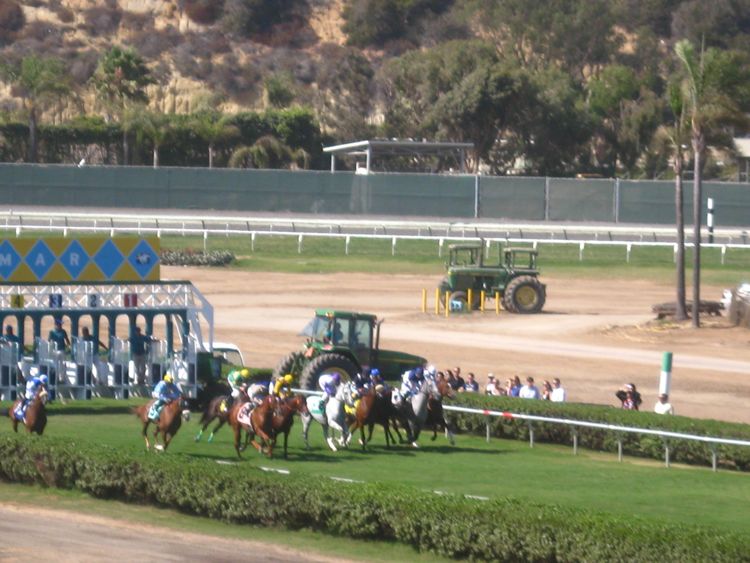
Off....

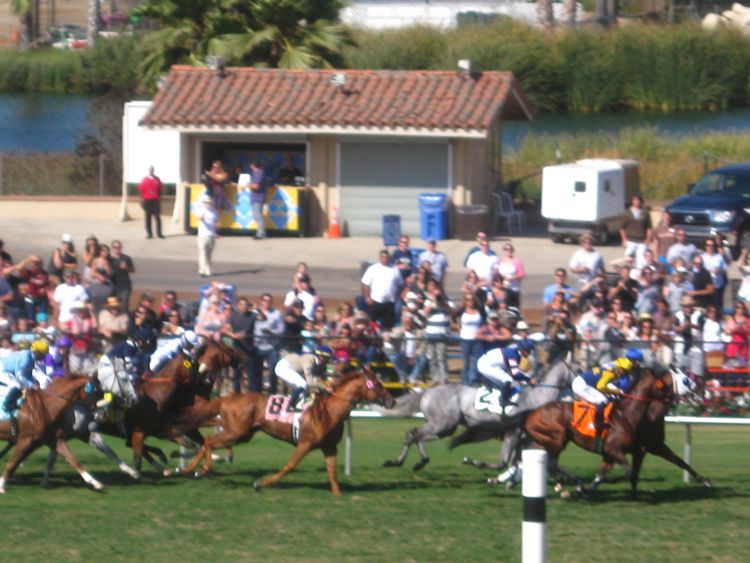


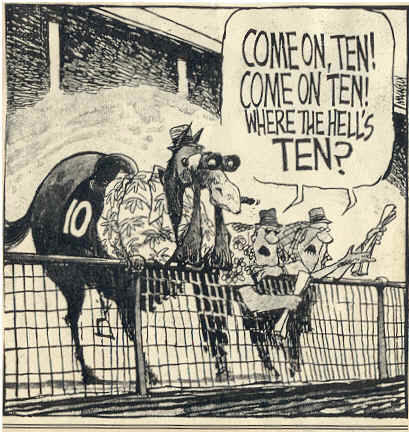


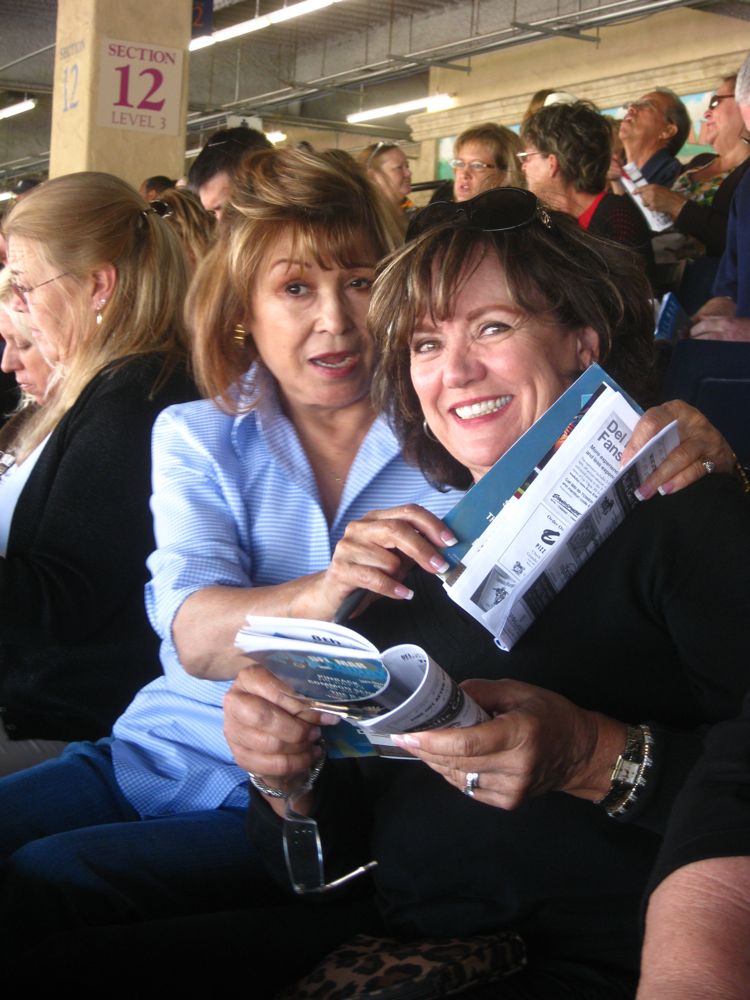

Studying hard

"Oh no.... I lost another one!"



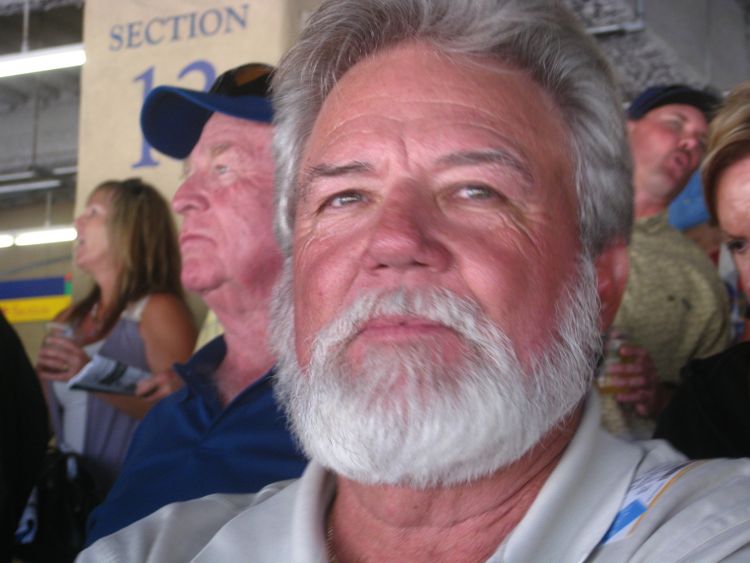
"Pardon me Mr. Rogers"

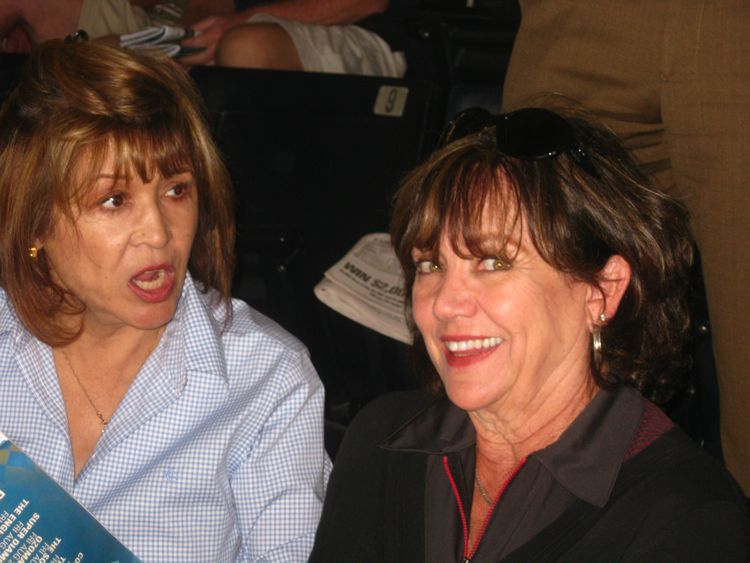

"Damned horse!"


A gentle reminder to pay your taxes
Did you know? - In July 1862, during the Civil War, President Lincoln and Congress created the office of Commissioner of Internal Revenue and enacted an income tax to pay war expenses (see Revenue Act of 1862). The position of Commissioner exists today as the head of the Internal Revenue Service.
The Revenue Act of 1862 was passed as an emergency and temporary war-time tax. It copied a relatively new British system of income taxation, instead of trade and property taxation. The first income tax was passed in 1861:enue Act of 1862 was passed as an emergency and temporary war-time tax. It copied a relatively new British system of income taxation, instead of trade and property taxation. The first income tax was passed in 1861:
- The initial rate was 3% on income over $800, which exempted most wage-earners.
- In 1862 the rate was 3% on income between $600 and $10,000, and 5% on income over $10,000.
- In 1864 the rate was 5% on income between $600 and $5,000; 7.5% on income $5,000–$10,000; and 10% on income $10,000 and above.
By the end of the war, 10% of Union households had paid some form of income tax, and the Union raised 21% of its war revenue through income taxes.


